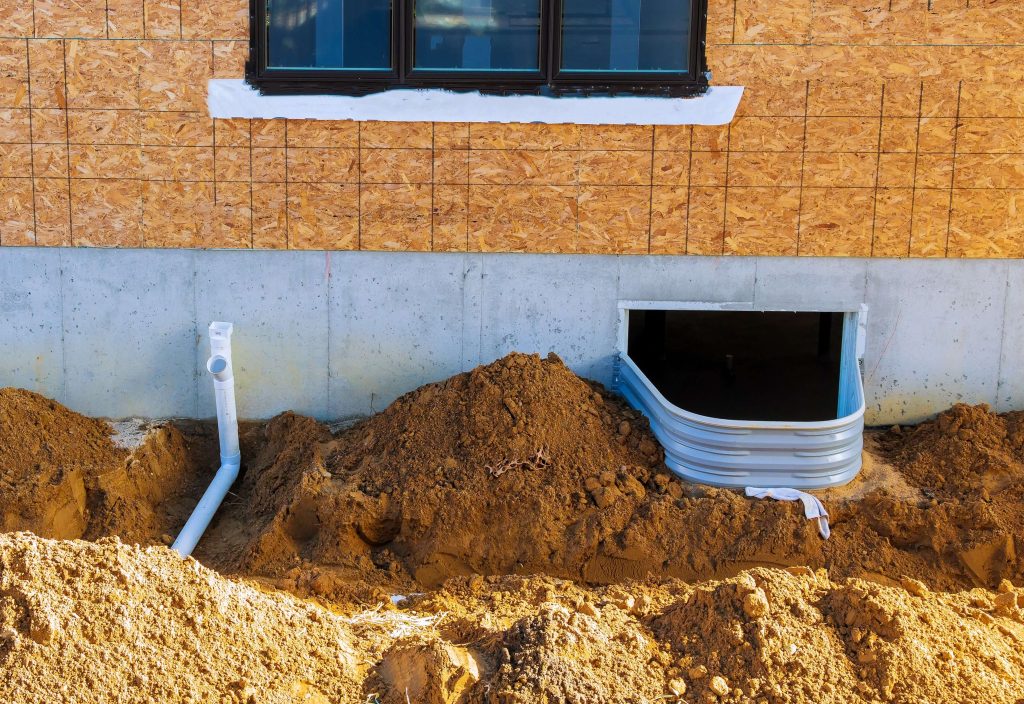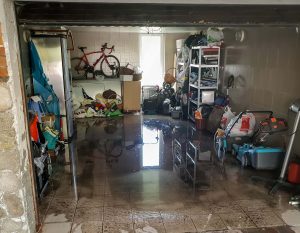5 Signs You May Need Both: A Guide to Window Well and French Drain Installation

Basement water issues aren’t just messy—they can damage your home’s foundation, ruin finished living space, and hurt resale value. For homeowners in London, Ontario, two of the most effective defenses are window well installation and french drain installation.
Window wells keep soil and storm water away from basement windows. French drains move groundwater and surface runoff away from your foundation. Each plays a role, but sometimes one alone isn’t enough.
Here are five clear signs your home may need both systems working together.
Sign 1 – Basement Leaks at Windows
If water seeps through your basement windows during heavy rain, your wells may not be working. Common signs include damp drywall below a window, water stains on sills, or streaks on the inside of a well.
Causes include:
- Shallow wells that don’t extend below the window base.

- Gravel clogged with soil or debris.
- Wells without a drain connection to the footing tile.
Even with covers, if your window wells repeatedly hold water, it’s a strong indication you need drainage support below. Adding a French drain ensures excess water doesn’t overwhelm the wells.
Sign 2 – Puddles and Pooling Near Foundation Walls
After a storm, check your yard. Standing water close to foundation walls is more than a nuisance—it’s a warning.
Red flags:
- Puddles lasting more than a day.
- Lawns that feel spongy near the house.
- Downspouts that end less than two metres from the foundation.
Pooling water increases soil pressure on the foundation. French drains intercept this water and carry it away. If you’re also seeing water at basement windows, that’s a signal both systems are needed.
Sign 3 – Damp Walls, Efflorescence, or Floor-Wall Seepage
Moisture problems aren’t always obvious floods. Sometimes they show up as subtle signs inside your basement:
- White, chalky residue (efflorescence) on walls.
- Dark damp lines where the wall meets the floor.
- Musty odours or peeling paint.
These symptoms point to hydrostatic pressure—saturated soil pressing moisture into your foundation. French drains reduce this pressure by lowering the water table. Combined with window wells, they form a more complete shield.
Sign 4 – High-Maintenance Window Wells That Never Stay Dry
Some homeowners constantly fight with their window wells—pumping them out, replacing gravel, or adding temporary fixes.
Warning signs:
- Wells that hold water after every rainfall.
- Soil or mulch washing into the well.
- Covers that reduce debris but don’t stop flooding.
If your wells flood even when properly maintained, the issue is bigger than the window opening. Pairing wells with a French drain provides a long-term fix, giving water a proper exit.
Sign 5 – Protecting Finished Basements and Resale Value
Moisture problems affect more than comfort. If your basement is finished—or if you plan to sell—water intrusion can cost you.
Why both systems protect your investment: 
- Buyers avoid homes with damp basements.
- Inspectors call out efflorescence and water-stained wells.
- Proper drainage upgrades improve confidence at resale.
Think of it this way: a dry, healthy basement adds square footage buyers trust. Combining window wells and French drains keeps it that way.
How Window Well Installation Works
Window wells aren’t just metal rings in the ground. A proper system includes:
- Excavation down to the base of the window.
- Installation of a rigid steel or plastic well.
- Gravel and filter fabric for drainage.
- A drain connection to footing level or another outlet.
- A clear cover to shed rainfall and debris.
Without all these elements, a well can fill like a bucket and fail during heavy storms.
How French Drain Installation Works
French drains tackle soil saturation. Here’s the process in plain language:
- A trench is dug sloping away from the house.
- Filter fabric, gravel, and perforated pipe are installed.
- The pipe is wrapped and backfilled with stone and soil.
- Cleanouts are added for maintenance.
- Water discharges to a storm-safe outlet (never sanitary).
Research continues to show that system-wide planning improves drainage results (IWA editorial).
Why Layered Protection Works Best in London
London’s clay-heavy soils hold water longer, making basements more vulnerable. Seasonal changes add to the stress:
- Spring thaw saturates the ground.
- Summer storms overwhelm shallow wells.
- Fall leaves clog gutters and drainage stone.
- Winter freeze-thaw cycles can shift soil and crack walls.
Window wells manage vertical water entry at windows. French drains manage horizontal soil pressure around the foundation. Together, they provide lasting protection.
Maintenance Tips to Keep Systems Effective
- Clear wells of leaves and soil every season.
- Keep gutters clean and downspouts extended 2–3 metres.
- Check grading to make sure the ground slopes away.
- Inspect basement walls for new cracks or stains.
- Flush French drain cleanouts annually to confirm flow.
Simple habits extend the life of both systems.
Next Steps: Book a Local Assessment
Not sure if your home needs one fix or both? The safest choice is a site inspection. A local pro will:
- Review grading and soil conditions.
- Inspect existing drainage and wells.
- Confirm legal discharge outlets.
- Provide a clear, written quote.
👉 Learn more about French drain services
👉 Ready to act? Contact Ashworth Drainage today.
Disclaimer: This article is for general guidance only. Every property is unique and requires professional assessment.
FAQs
Do window wells always need drains?
Yes. Without a drain path, wells will hold water and eventually leak.
Can French drains fix window leaks?
No. They handle soil saturation, but window wells protect openings.
What’s the biggest benefit of using both systems?
Layered protection—windows and walls are both secured.
Do I need covers on my wells?
Covers reduce debris but don’t replace proper drainage.
How do I know if both are required?
If you see window leaks and wall seepage, both systems are recommended.
